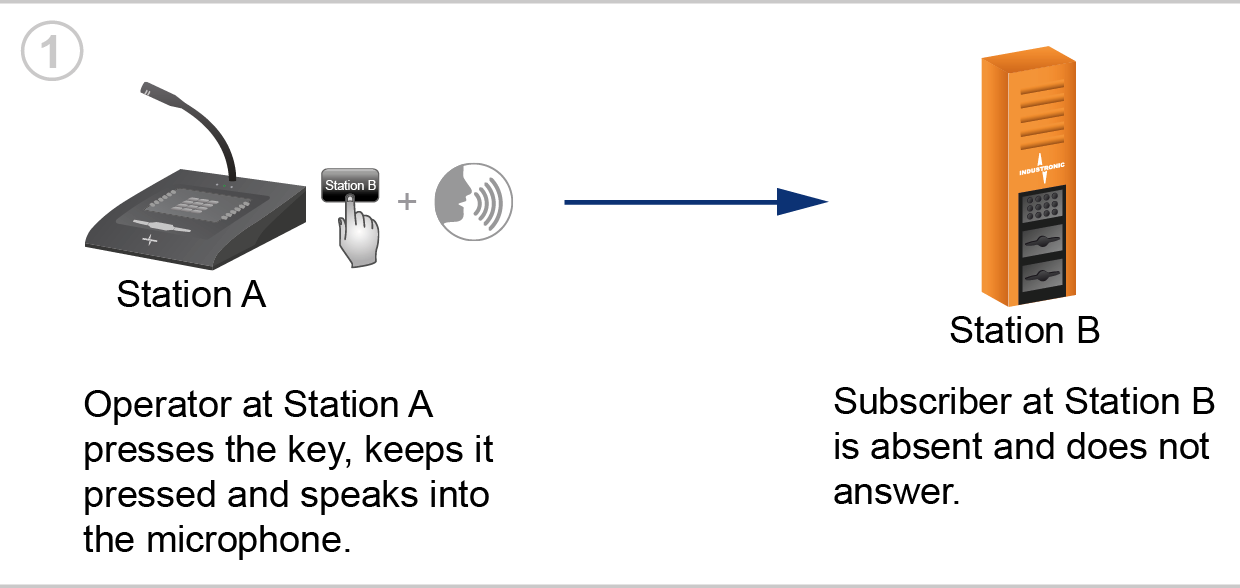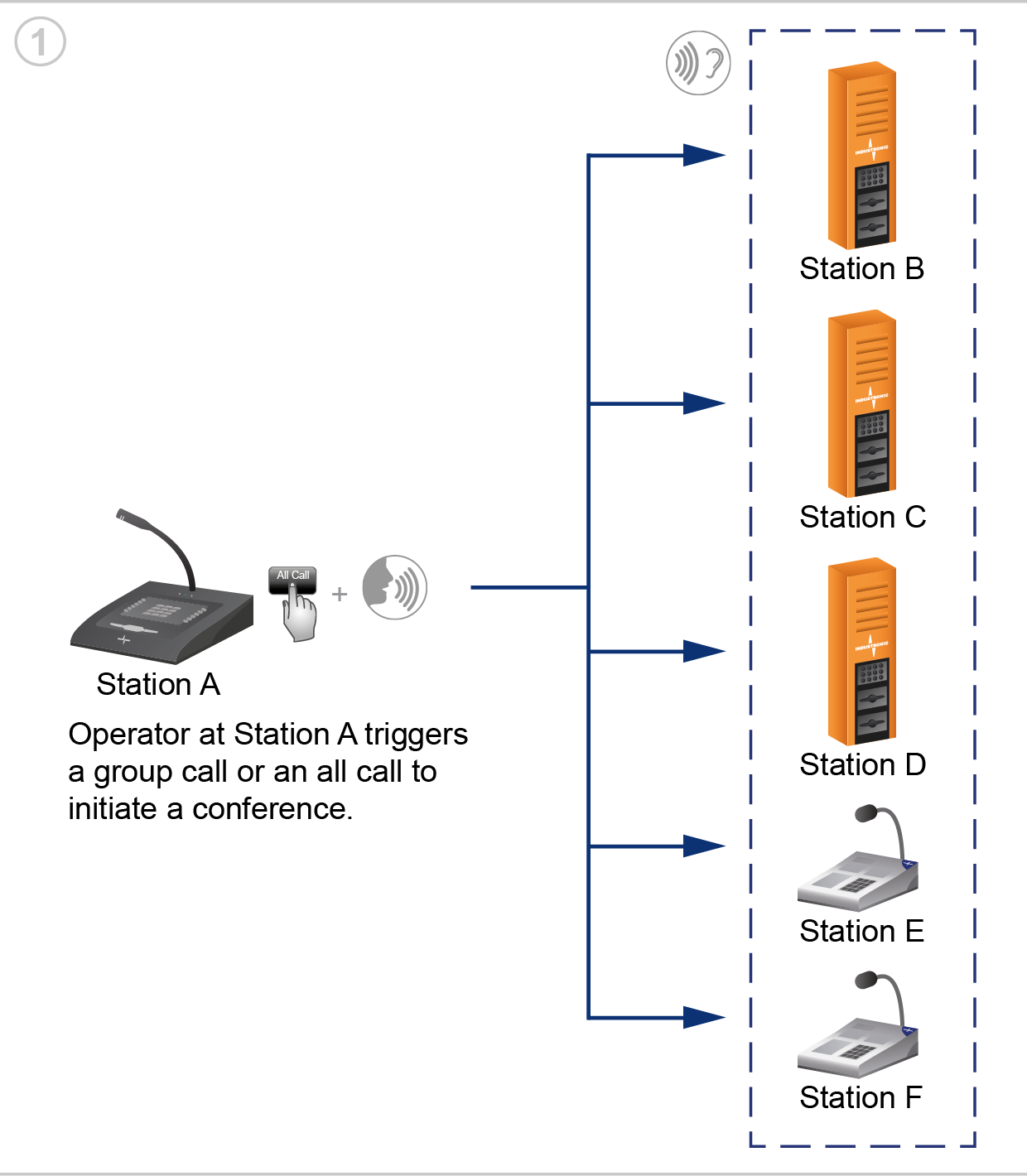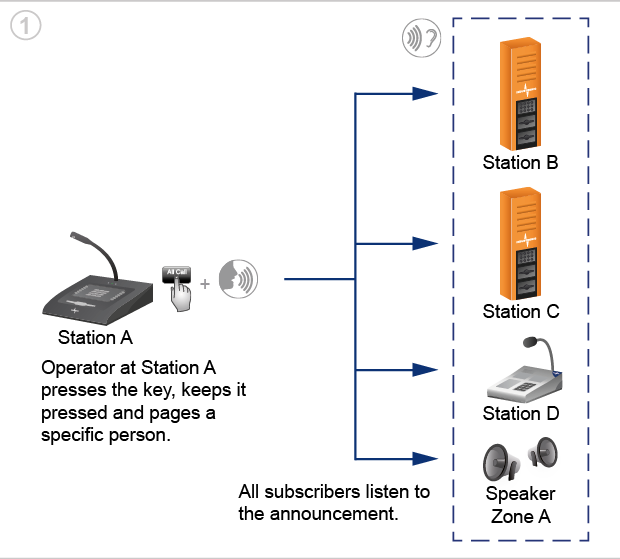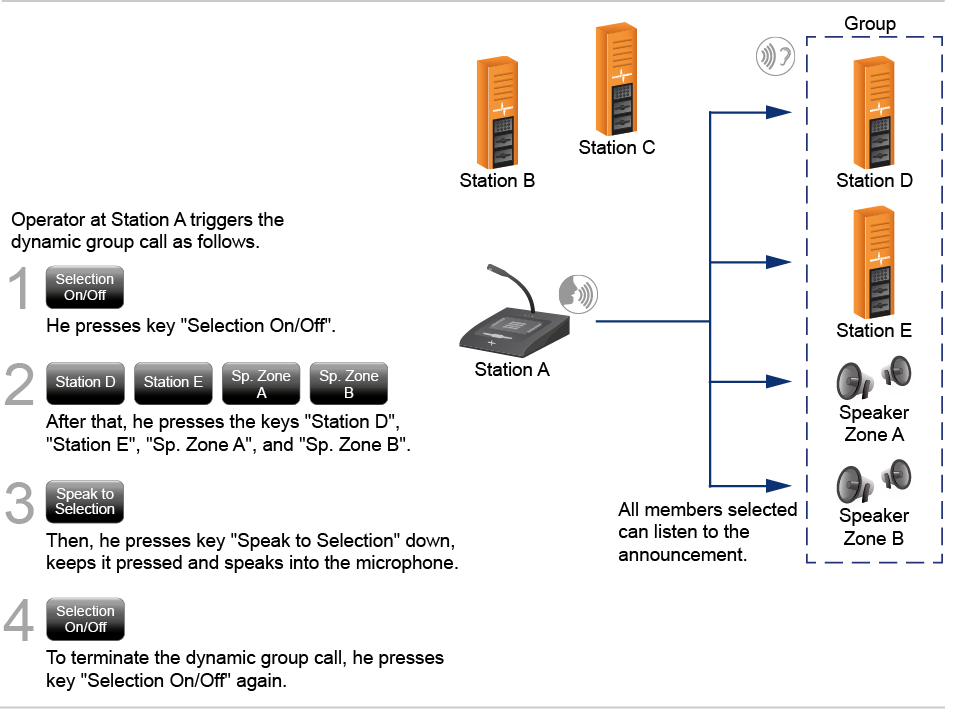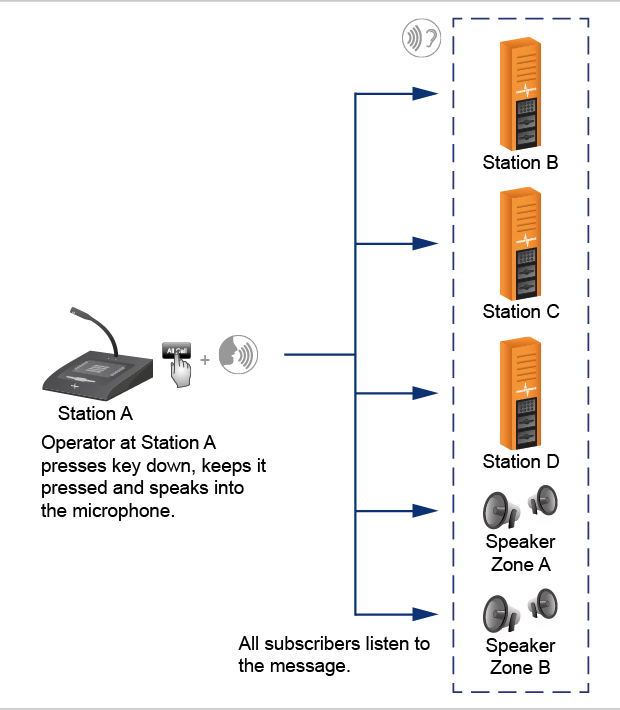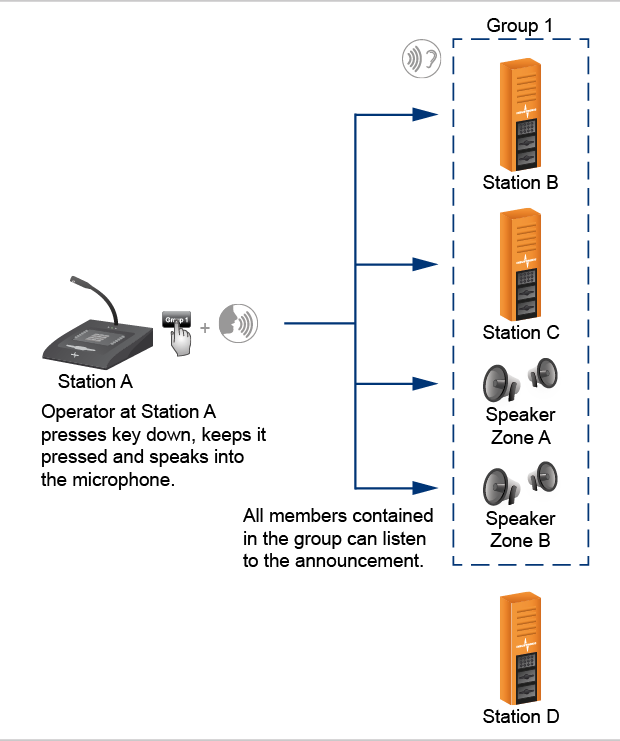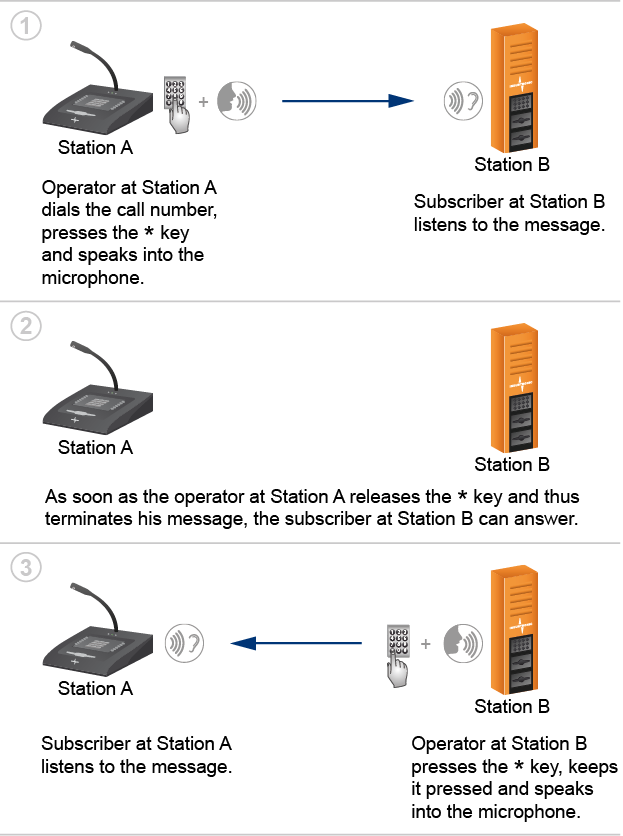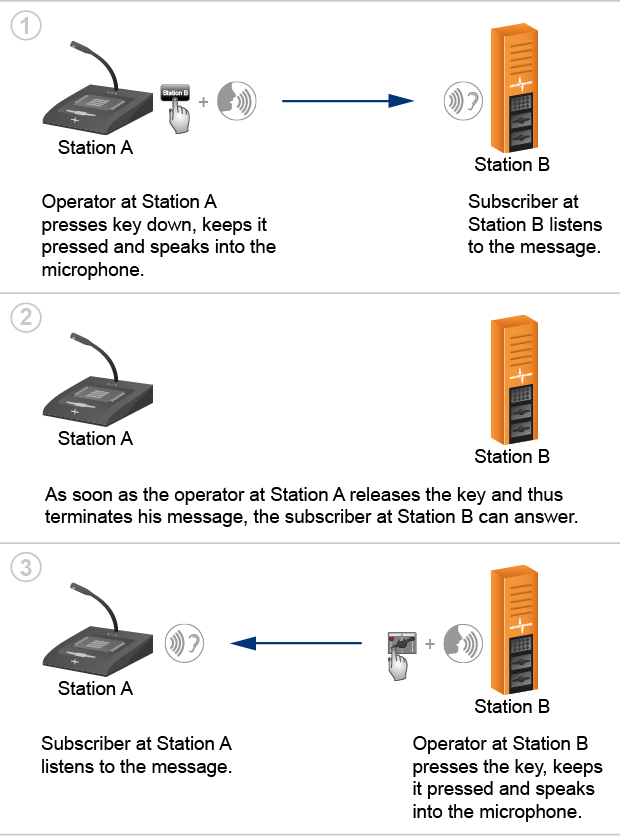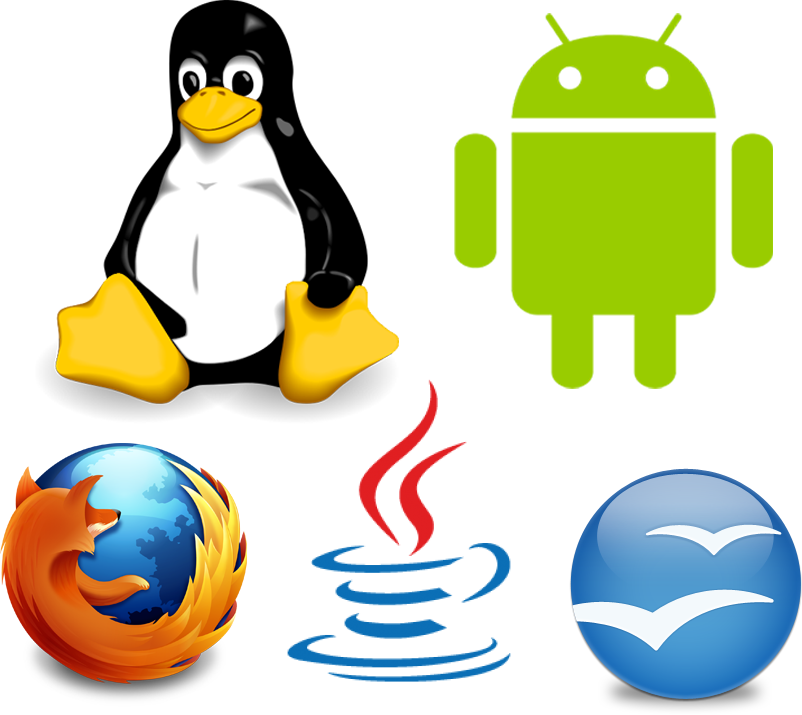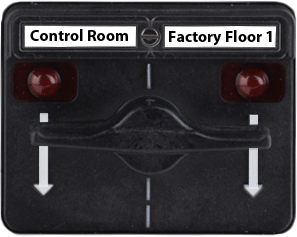Today´s topic of INDUSTRONIC functions is “Call Storage” where an incoming call request is stored for a later callback and is visually indicated. No Call is Lost Due to the blinking LED on the key, the operator knows immediately who tried to reach him when he was absent. Via simple keypress, he can then call […]
Today´s topic of INDUSTRONIC functions is the “Conference” where several members are connected with each other via a conference channel. All Subscribers Can Speak to Each Other You use conferences if you want to easily and quickly connect several subscribers from different locations. They can then talk about operational processes or discuss the next work […]
In my latest blog posts about INDUSTRONIC functions I introduced you to different one-way and two-way communication procedures. Today´s function combines these two types of voice connections in one application – the so-called “Page & CallBack” function. You use Page & CallBack if you want to address a person who is somewhere in the plant, […]
Today´s topic of INDUSTRONIC functions is the “Dynamic Group Call” which allows to establish a call to a freely selectable group of members. One Subscriber Speaks – All Selected Members Listen A dynamic group call provides communication in one direction (unidirectional) where one subscriber speaks and all selected members of the group listen simultaneously (Point-to-Multipoint […]
Today´s topic in my series of INDUSTRONIC functions is the “All Call” which allows to establish a call to all employees in your facility. One Subscriber Speaks – the Others Listen An all call provides communication in one direction (unidirectional) where one subscriber speaks and all others listen simultaneously (Point-to-Multipoint connection). Subscribers and targets can […]
In my last two blog articles I described different ways of bidirectional communication. This time I would like to give you an insight into a unidirectional communication method where a call is established to a pre-defined group of members – the group call. One Subscriber Speaks – the Others Listen For a group call, one […]
After already introducing you to the function “Direct Two-way Communication” in my last blog article, I would like to continue with my series on INDUSTRONIC functions. Today’s topic is “Dynamic Two-way Communication” which allows establishing a voice connection to any desired subscriber by using a dial keypad. Furthermore, keys can be saved and the intercom […]
From unidirectional voice announcements through to conferences with several subscribers – communication and public address systems provide a wide range of functions. For you to gain an insight into the possibilities of such systems I would like to use this blog to introduce you to different functions in the coming weeks and months. This week […]
A post by our colleague Timur Achmetow, Development “Systems Software” Open source software (OSS) such as Android, Linux™ or Java™ is widely used these days and can be found in smartphones (Android), set-top boxes (Linux™, Java™), TVs (Linux™ kernel) or PCs (Linux™, Firefox®, OpenOffice™) for example. But what exactly is OSS? A software is called […]
In my article of February 27, 2014 about priority-controlled communication I already mentioned that visual signaling is important for Intercom and PA/GA systems so that the operators maintain the control over active functions and different system states at any time. In this article, I will introduce you to 4 basic signaling types by using momentary […]
